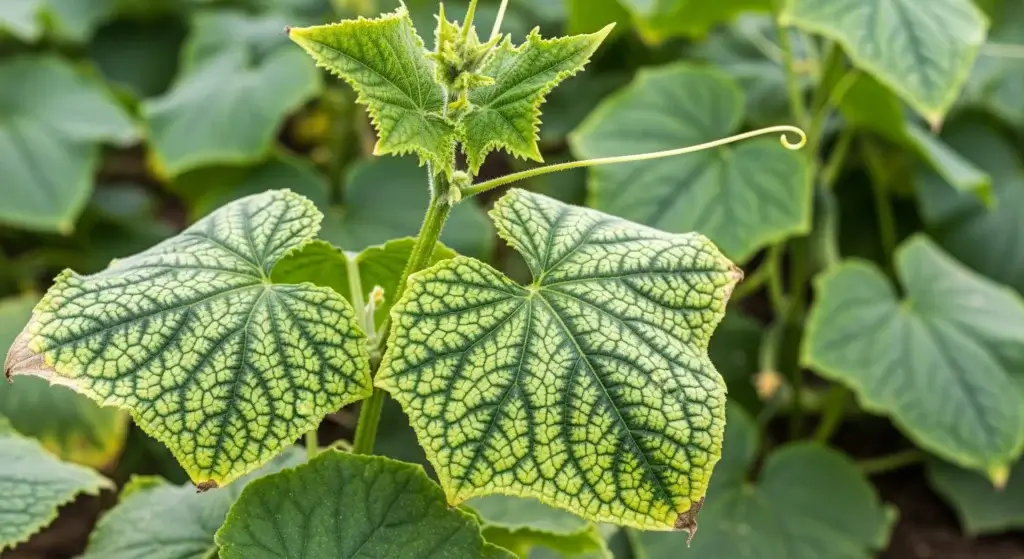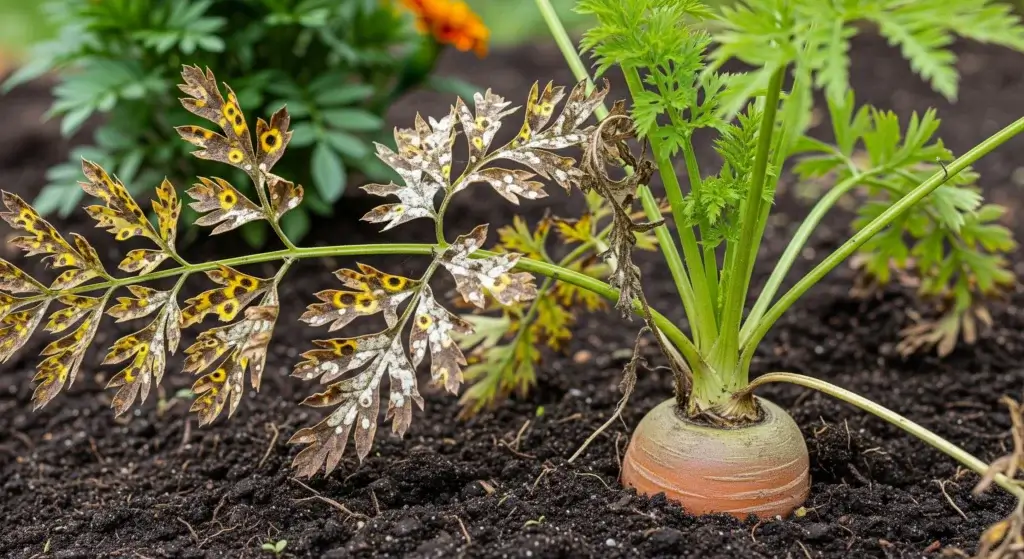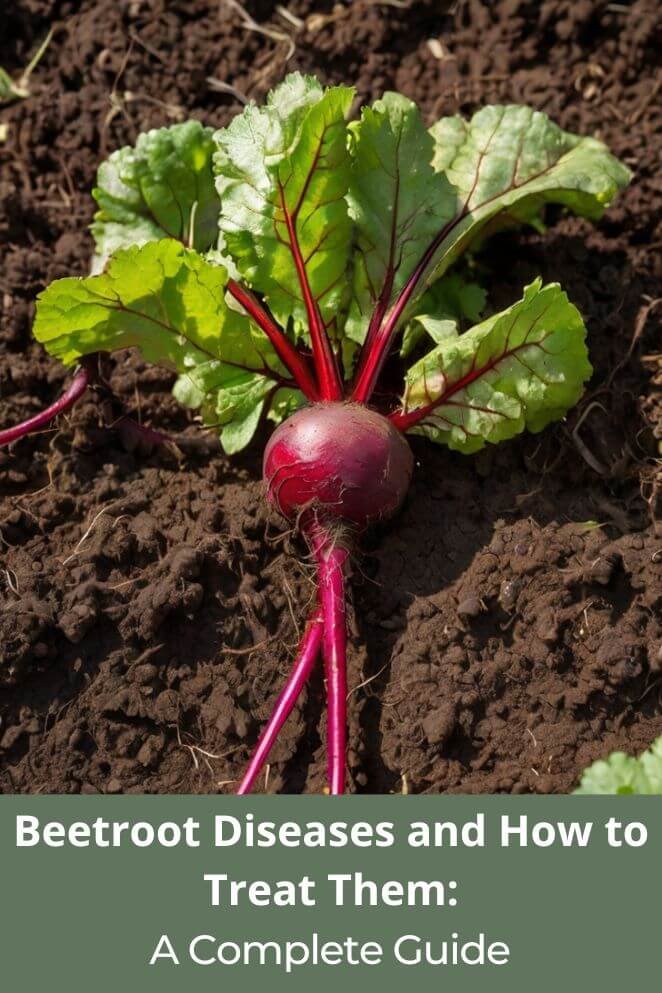
Growing healthy beets? You’ll need to keep an eye out for diseases that can sneak in and wreck your crop fast.
Whether you’ve got a backyard bed or a whole field, knowing the common beetroot troublemakers—and how to deal with them—is key.
This guide breaks down what to watch for, how to prevent issues before they start, and what to do if your beets start looking sad.
Think of it as your beetroot survival manual—because even tough veggies need a little backup.
Understanding Beetroot Disease Fundamentals
Beets might look tough, but they’re still vulnerable to all kinds of plant drama—fungal, bacterial, even viral.
Most of these diseases show up when the conditions are just right: too much moisture, poor airflow, or stressed-out plants (yes, plants get stressed too).
The real secret? Prevention beats cure every time.
Keep your beets healthy, and they’re way more likely to fight off problems on their own—kind of like giving them a strong immune system through good care.
If you understand how these diseases work and what triggers them, you can stop most issues before they even start.
It’s like plant jiu-jitsu: don’t fight the disease—just don’t give it a chance to show up in the first place.
- Read also: Aloe Vera Pests and Diseases: A Comprehensive Guide
- Read also: Summer Pest and Disease Management for Your Garden
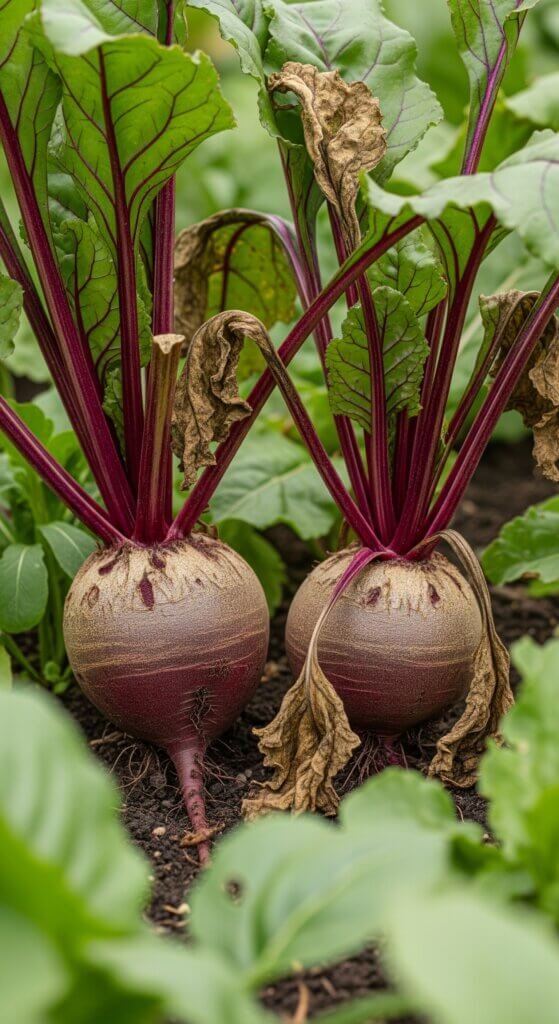
Major Beetroot Diseases and Their Identification
Even healthy-looking beets can get hit with diseases that sneak in and wipe out your crop if you’re not watching.
Don’t stress—here’s how to recognize the main troublemakers and what to do about them, using simple strategies that work for backyard gardeners and serious growers alike.
Damping-off disease
This one’s rough. Your baby beets sprout, then suddenly flop over and melt into mush.
What it looks like: Mold on the soil, mushy stems, seedlings collapsing like they just gave up.
Caused by: Fungi like Fusarium, Pythium, and Rhizoctonia—they love wet, poorly drained soil.
Fix it:
- Use sterile soil and clean containers
- Don’t overwater (baby beets don’t like soggy feet)
- Give them breathing room with good spacing
- Treat seeds with Captan, Thiram, or Metalaxyl if things get bad
Cercospora leaf spot
These brown-ringed, white-centered spots mess up beet leaves fast and can crash root growth.
What it looks like: Circular leaf spots, yellowing leaves, early drop.
Thrives in: Warm, humid conditions—especially if you’re watering from above.
Fix it:
- Use clean, disease-free seed
- Pull infected leaves and toss them far, far away
- Avoid overhead watering
- Spray with a fungicide early if needed
- Give plants space to breathe
Downy mildew
This one’s big in foggy or coastal areas. Leaves get patchy on top, fuzzy underneath.
What it looks like: Yellow upper leaf patches + grayish mold on the bottom.
Loves: Cool, damp weather and morning dew.
Fix it:
- Go with resistant varieties
- Use copper-based sprays preventively
- Don’t work around plants when they’re wet (your boots spread spores)
- Space plants out for airflow
- Yank and toss infected plants
Root rot and crown rot
Your beet tops yellow or wilt, then the roots turn black and gross. Not fun.
What it looks like: Plants collapse, roots rot, soil smells funky.
Caused by: Waterlogged soil + poor drainage = fungal paradise.
Fix it:
- Improve drainage or build raised beds
- Don’t overwater
- Use a Bordeaux mix or copper fungicide drench
- Plant early and shallow to avoid hot, wet soil conditions
Verticillium wilt
This one takes its time. Plants look fine until they’re not.
What it looks like: One side of the plant wilts first, then the other. Leaves yellow and die off.
What’s going on: Fungus clogs the plant’s “plumbing” system, blocking water.
Fix it:
- Use resistant varieties if available
- Rotate crops—long rotations, like 4+ years
- Solarize soil in hot climates to kill it off
- Remove infected plants and surrounding soil
- Don’t move soil or tools from sick zones to healthy ones
Powdery mildew
Looks like your beets got dusted in powdered sugar—but it’s fungus.
What it looks like: White powder on older leaves, leading to yellowing and drop.
Weird but true: It prefers dry air and mild temps.
Fix it:
- Hit early with sulfur-based sprays
- Space plants for better airflow
- Remove infected leaves
- Grow resistant varieties if you can
- Spray preventively during dry spells
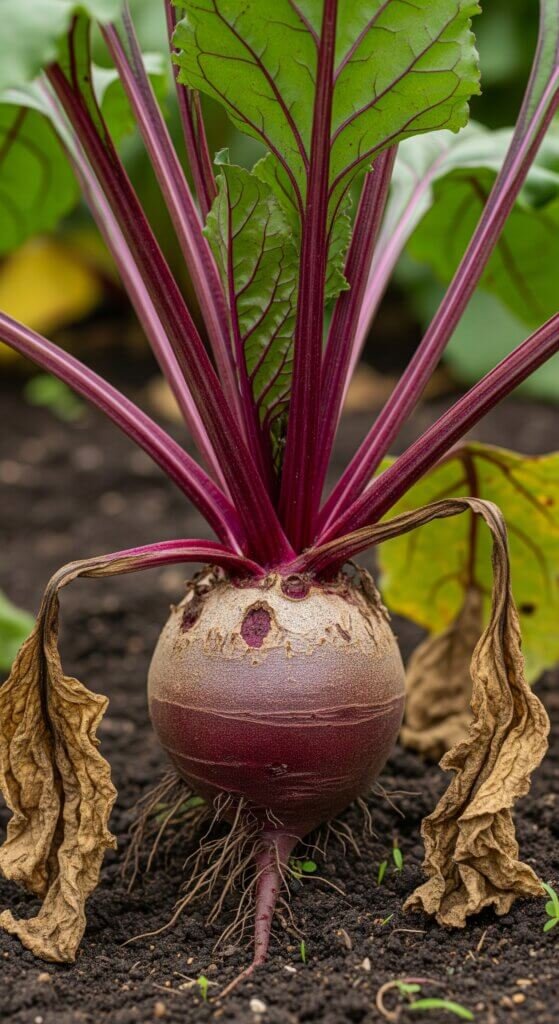
Integrated Disease Management Strategies
Keeping beet diseases in check isn’t about finding one magic cure—it’s about mixing smart habits, helpful microbes, and just enough spray to stay ahead of trouble.
Think of it as your beetroot wellness routine: some diet, some supplements, and maybe a little medicine if things get rough.
Cultural practices
The best way to stop disease? Make your garden a place fungi don’t want to hang out.
- Rotate crops—Don’t plant beets in the same spot year after year. Give the soil a break and switch to unrelated crops so pathogens don’t get comfy.
- Feed the soil—Add compost to boost the good microbes that keep the bad guys in check.
- Fertilize smart—Healthy plants fight off disease better, but don’t overfeed them into a leafy mess that invites pests.
Biological control methods
Not all microbes are villains—some are garden superheroes.
- Treat seeds with Trichoderma or Pseudomonas fluorescens. These good guys hang out on your roots and fight off the bad fungi like plant bouncers.
- Spray compost tea—it’s like a smoothie packed with nutrients and friendly microbes. Works best as a shield, not a cure.
Chemical control options
Sometimes, you need backup—but don’t go full toxic Avengers.
- Copper-based fungicides are solid go-tos and even organic-approved.
- For bigger issues, use systemic fungicides, but rotate types so fungi don’t develop resistance (they learn fast, like AI with bad intentions).
- Always read the label. Seriously. You don’t want to mess with your harvest timing or safety.
Environmental management
Wet leaves and poor airflow = welcome mat for diseases.
- Use drip irrigation to water the roots, not the leaves. Foliage stays dry, and disease risk drops fast.
- Growing indoors or in a tunnel? Get that air moving with good ventilation. Humid air is like a spa day for mildew—shut it down.
Prevention: Your Best Defense Strategy
Here’s the truth: it’s way easier to stop beetroot diseases before they start than to fix them once they show up.
Prevention isn’t glamorous, but it’s the real MVP of healthy gardening.
Clean up your act
Dead or diseased leaves? Don’t let them hang around like bad roommates.
Pull them off and toss them—your beets need fresh air and breathing room.
Fungi love cramped, damp, and messy. Clean = calm.
Sanitize like you mean it
Use the same pruners across the whole garden without cleaning them? That’s basically swiping right on plant disease.
Wipe tools down between uses and clean up any crop debris instead of leaving it to rot. Your plants will thank you.
Start with the good stuff
Always go for certified disease-free seeds.
They’re like coming into the season with a clean bill of health instead of starting from behind.
Pick your spot wisely
Where you plant matters.
Choose sunny, well-drained spots with good airflow.
Don’t replant beets in beds with a disease history—think of it like bad exes: some places just have too much baggage.
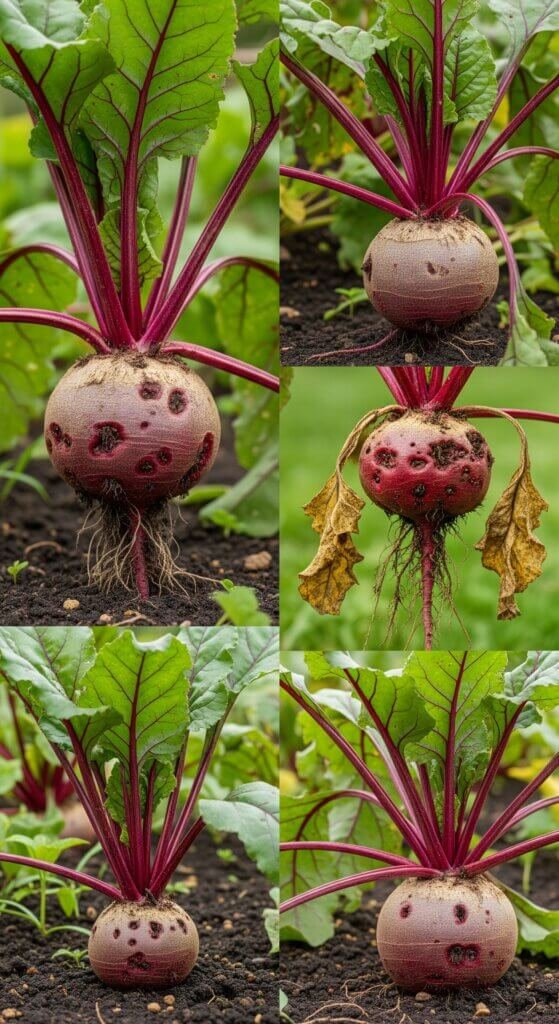
When to Harvest Diseased Plants
Got a few sick beets in the patch? Don’t panic.
You can still save the crop—if you act fast and know what you’re dealing with.
Leaf disease? root’s usually fine
If your plants have stuff like Cercospora or mosaic virus—no biggie if you’re eating the root.
Just don’t use the leaves, and definitely don’t let it spread.
The beetroot itself is usually still good to eat.
Rot? time to trim
If the root has soft, mushy spots or black rot creeping in, you’ve got to cut out the bad parts.
If it’s too far gone or smells funky—ditch it. Beets aren’t supposed to feel like pudding.
Don’t wait—harvest early
If a disease is starting to spread, pull affected plants early.
A slightly smaller beet you can eat is better than a ruined one you have to toss.
Think of it as a rescue mission, not a loss.
Don’t store sick beets
Even if you save part of it, don’t stash diseased veggies.
Eat them right away—rot loves cool, dark places like root cellars and fridges.
- Read also: 10 Essential Tips for Winter Garden Pest and Disease Prevention
- Read also: Pumpkin Pests and Disease: How to Identify and Manage Them Effectively
Final Take: Keep Your Beets Healthy, Keep Your Harvest Happy
Growing great beets isn’t luck—it’s about staying ahead of disease with smart habits: prevent early, spot problems fast, and treat them right.
The secret? Build a system that works with nature—good soil, clean tools, healthy plants, and a watchful eye.
Whether you’re feeding your family or selling at the market, managing disease the smart way means better beets, bigger yields, and fewer headaches.
Stay consistent, keep learning, and remember: healthy beets don’t happen by accident—they happen by design.

